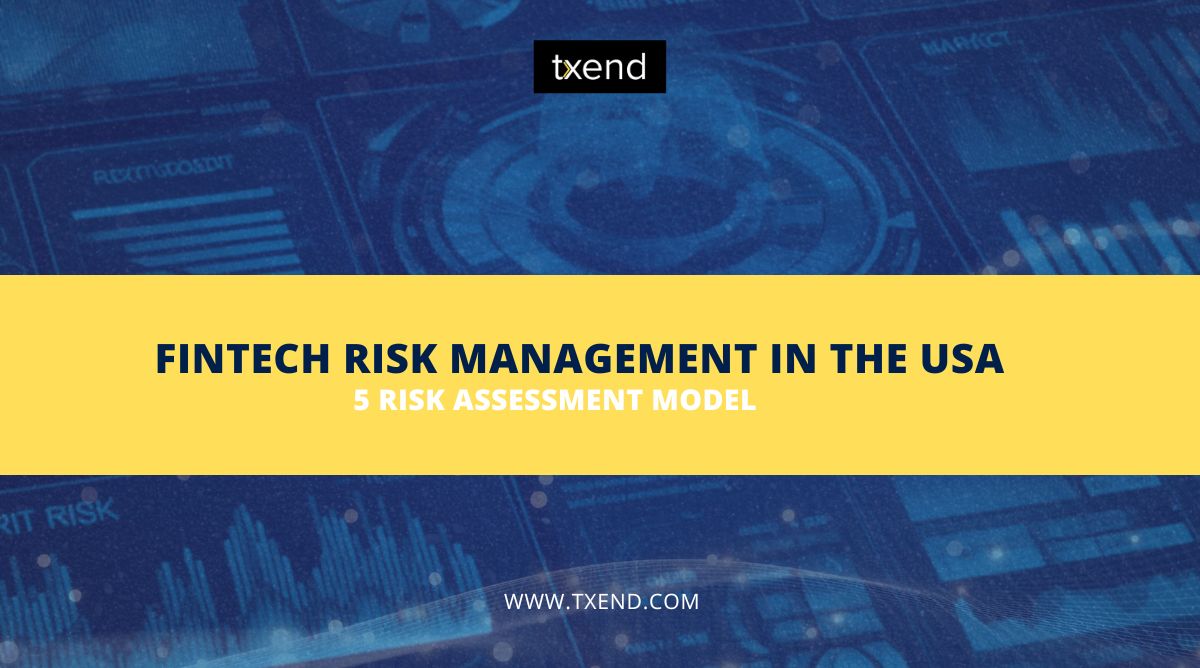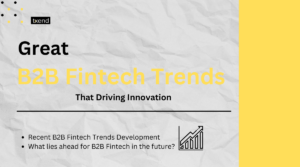In the dynamic landscape of financial technology, understanding Financial Technology risk management is crucial for success in the USA market.
This article explores key considerations, including the Financial Technology risk management framework, strategies for effective risk management fintech, the role of risk management software for banks, and the evolving risk management responsibilities in the fintech sector.
As fintech continues to reshape the financial industry, navigating risk is paramount for sustainable growth and innovation. Join us on this journey to uncover the essentials of Financial Technology risk management in the USA market.
Key takeaways
- Fintechs face risks like cybersecurity threats, regulatory changes, operational disruptions, and market volatility, impacting their stability and growth.
- The Fintech ecosystem involves start-ups, tech developers, financial customers, traditional institutions, and the government shaping financial innovation.
- Fintech Risk Management ensures stable, secure fintech operations, addressing risks like cybersecurity, compliance, and operational disruptions.
- Broad-based risk management includes role definition, risk ranking, control evaluation, response planning, maturity assessment, and effective communication.
- Risk Assessment Model identifies, analyzes, and addresses fintech risks through identification, qualitative and quantitative analysis, enterprise risk management, and innovation-specific risk management.
Types of Fintech Risks
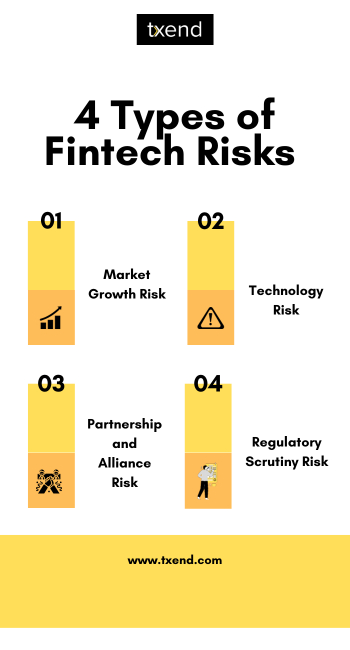
Market Growth Risk:
Fintechs in the USA face market growth risks due to the dynamic nature of the financial technology sector. Market fluctuations and economic uncertainties can impact revenue and profitability.
For example, during economic downturns, consumer spending may decline, affecting fintech companies that rely on transaction volumes for revenue.
Technology Risk:
Fintechs must constantly adapt to emerging technologies to remain competitive. Failure to adopt or adapt to technological advancements can result in obsolescence. For instance, companies that ignored blockchain technology risked falling behind in the fast-evolving cryptocurrency space.
Partnership and Alliance Risk:
While partnerships can expand fintech offerings, they also introduce risks, such as reliance on third parties. Collaborations should be chosen carefully. Case in point, a fintech partnering with a bank must ensure that the bank’s compliance with regulations aligns with the fintech’s goals.
Regulatory Scrutiny Risk:
Fintechs often operate in heavily regulated sectors. Regulatory changes or heightened scrutiny can impact operations. An example is the increased regulatory focus on data privacy, which affects how fintechs handle user data and necessitates robust compliance measures.
Managing these risks effectively is crucial for fintechs to thrive in the USA market. It involves robust risk assessment, compliance measures, continuous technological innovation, and strategic partnerships to navigate the complexities and uncertainties inherent in the fintech industry.
What is Fintech Ecosystem?
"The fintech ecosystem encompasses startups, financial institutions, regulators, investors, and technology providers. It leverages innovative tech to revolutionize financial services, connecting consumers, businesses, and data providers for more accessible and efficient solutions. This dynamic network shapes the future of finance."
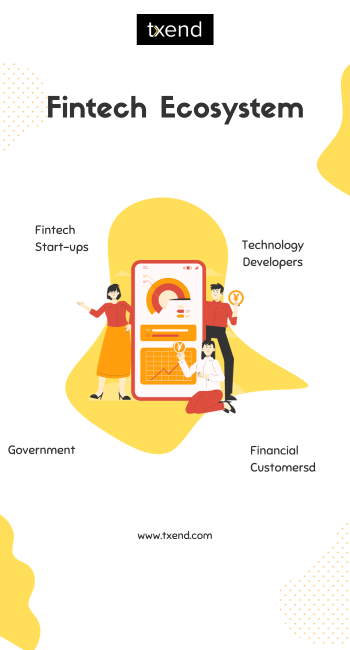
Fintech Start-ups:
Fintech start-ups are the engines of innovation in the ecosystem. They introduce new financial products, services, and business models. For instance, companies like Stripe and Square have disrupted payment processing, offering efficient business solutions.
Technology Developers:
FinTech developers provide the foundational infrastructure for fintech operations. They create software, APIs, and platforms that enable fintech companies to deliver their services. Companies like AWS and Google Cloud offer cloud computing and data storage solutions vital to fintech operations.
Financial Customers:
Financial customers, including individuals and businesses, are at the heart of the fintech ecosystem. They adopt fintech solutions for convenience and efficiency. Examples include consumers using mobile banking apps or businesses employing fintech platforms for payment processing.
Traditional Financial Institutions
Fintechs coexist with conventional financial institutions like banks and credit unions. They may partner with fintechs, invest in them, or launch their fintech initiatives. JPMorgan Chase, for example, has invested in blockchain technology and fintech start-ups to stay competitive.
Government
Government agencies and regulators play a crucial role in the fintech ecosystem by setting the regulatory framework. To ensure consumer safety and market integrity, the Securities and Exchange Commissioners of the United States (SEC) oversees securities and investment-related fintech operations.
The Concept of Fintech Risk Management
Financial Technology Risk Management in the USA identifies, assesses, and mitigates risks associated with financial technology activities. It ensures the stability, security, and compliance of fintech operations.
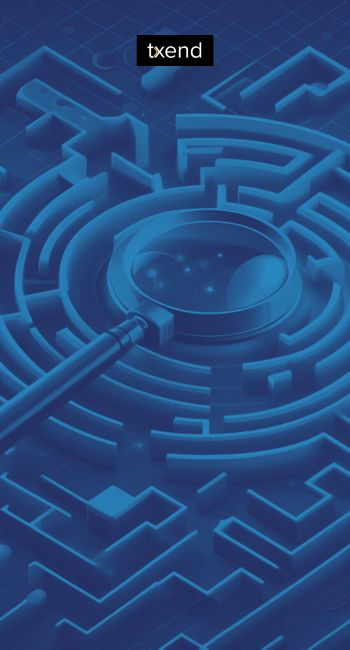
Here are practical examples:
Cybersecurity Risks:
Fintechs must safeguard user data from breaches. For instance, Equifax, a credit reporting agency, faced a massive data breach in 2017, highlighting the need for robust cybersecurity measures.
Regulatory Compliance:
Fintechs must adhere to financial regulations. PayPal, for example, faces regulatory scrutiny and compliance requirements due to its role in online payments and money transfer services.
Operational Risks:
Glitches or downtime can disrupt fintech services. Robinhood experienced technical issues during a surge in trading volume, affecting users’ ability to execute trades.
Market Risks:
Fluctuations in financial markets can affect fintech businesses. Wealthfront, a robo-advisor, must manage market risks to ensure its automated investment strategies perform as expected.
Credit Risks:
Fintech lending platforms like LendingClub must assess the creditworthiness of borrowers to minimize defaults and losses.
Reputation Risks:
Negative news or user experiences can harm a fintech’s reputation. Venmo faced criticism for its privacy settings and potential user data exposure.
Effectively managing these risks ensures the resilience and trustworthiness of fintech companies in the USA market, fostering long-term success and regulatory compliance
6 Elements of a broad-based risk management approach
A comprehensive Fintech Risk Management approach in the USA encompasses several key elements to ensure robust risk mitigation.
These include:
Governance Model and Defined Roles:
Establish a governance model that clearly defines roles and responsibilities. Identify key individuals responsible for risk assessment, monitoring, and response. For example, appoint a Chief Risk Officer (CRO) to oversee risk management efforts.
Risk Identification and Ranking:
Thoroughly assess applicable risks, considering both internal and external factors. Rank risks based on their potential impact and likelihood. This step helps prioritize risk mitigation efforts effectively.
Evaluation of Controls Environment:
Review and assess the existing controls environment. Ensure that policies, procedures, and security measures are in place to mitigate identified risks. Regularly audit and update controls to adapt to evolving threats.
Risk Evaluation and Response Options:
Evaluate the identified risks and develop a range of response options. For instance, if cybersecurity risks are identified, response options may include enhancing encryption protocols or conducting penetration testing.
Consideration of Maturity and Technology:
Assess the organization’s maturity level in managing risks. Evaluate the technology stack in use and its capacity to address emerging threats. Investing in advanced risk management software and AI-driven solutions can enhance risk mitigation.
Effective Reporting and Communication:
Establish a robust reporting and communication mechanism. Ensure management is informed of risk status, mitigation progress, and potential vulnerabilities. Transparent communication facilitates informed decision-making.
By incorporating these elements into the risk management framework, fintech companies in the USA can adopt a proactive stance towards risk mitigation. This approach helps safeguard financial technology operations, build stakeholder trust, and comply with regulatory requirements in the dynamic fintech landscape.
5 Risk Assessment Model
The Risk Assessment Model for Financial Technology risk management involves a structured approach to identify, analyze, and address various risk areas:
Identify Fintech Risk:
Begin by identifying potential risks specific to fintech operations. These can include cybersecurity threats, regulatory changes, operational disruptions, and market volatility.
Perform Qualitative Risk Analysis:
Conduct a qualitative assessment of identified risks. This involves evaluating their potential impact and likelihood. For instance, cybersecurity risks may be categorized as high if they have a severe impact and a high likelihood of occurrence.
Perform Quantitative Risk Analysis:
Quantify the identified risks wherever possible. Assign monetary values to potential losses and estimate the financial impact. This step helps prioritize risk mitigation efforts. For instance, quantify potential financial losses due to a data breach.
Address Fintech Enterprise Risk Area:
Fintech enterprise risks encompass broader organizational risks. Address these risks by implementing risk management strategies and controls at the enterprise level. For example, develop a comprehensive cybersecurity policy to mitigate data breach risks.
Implement Fintech Innovative Solutions Risk Area:
Fintech innovation introduces unique risks. Evaluate and address these risks proactively. For instance, consider the risks involved with adopting new technology and make sure that there are sufficient precautions before implementing creative blockchain-based solutions.
By following this risk assessment model, fintech companies can systematically identify, analyze, and address risks in their operations. This proactive approach enhances risk management capabilities, fosters resilience, and supports sustainable growth in the USA fintech market.
Frequently Asked Questions
A robust Financial Technology risk management framework is vital for USA financial institutions to identify, assess, and mitigate risks. It enhances stability, security, and compliance, safeguarding the institution’s and its customers’ interests.
Fintech companies in the USA ensure compliance by staying updated with evolving regulations and tailoring risk management strategies accordingly. This includes rigorous adherence to anti-money laundering (AML) and Know Your Customer (KYC) requirements.
Individuals involved in Financial Technology risk management must identify risks, develop mitigation strategies, and monitor risk levels. They play a pivotal role in safeguarding the institution’s reputation and ensuring regulatory compliance.
Risk management software empowers banks and fintech companies in the USA by automating risk assessments, providing real-time monitoring, and facilitating data analysis. It enhances the accuracy and efficiency of risk management processes, enabling timely responses to emerging threats.
Conclusion
In conclusion, understanding the nuances of fintech risk management is imperative for successfully navigating the dynamic and competitive USA market.
Fintech companies can mitigate potential pitfalls and thrive in this rapidly evolving landscape by adopting a robust Financial Technology risk management framework, deploying innovative risk management software for banks, and clarifying risk management responsibilities.
The key considerations discussed here underscore the importance of proactive risk assessment and management to ensure compliance, security, and trust, ultimately facilitating sustainable growth and innovation in the fintech industry.
